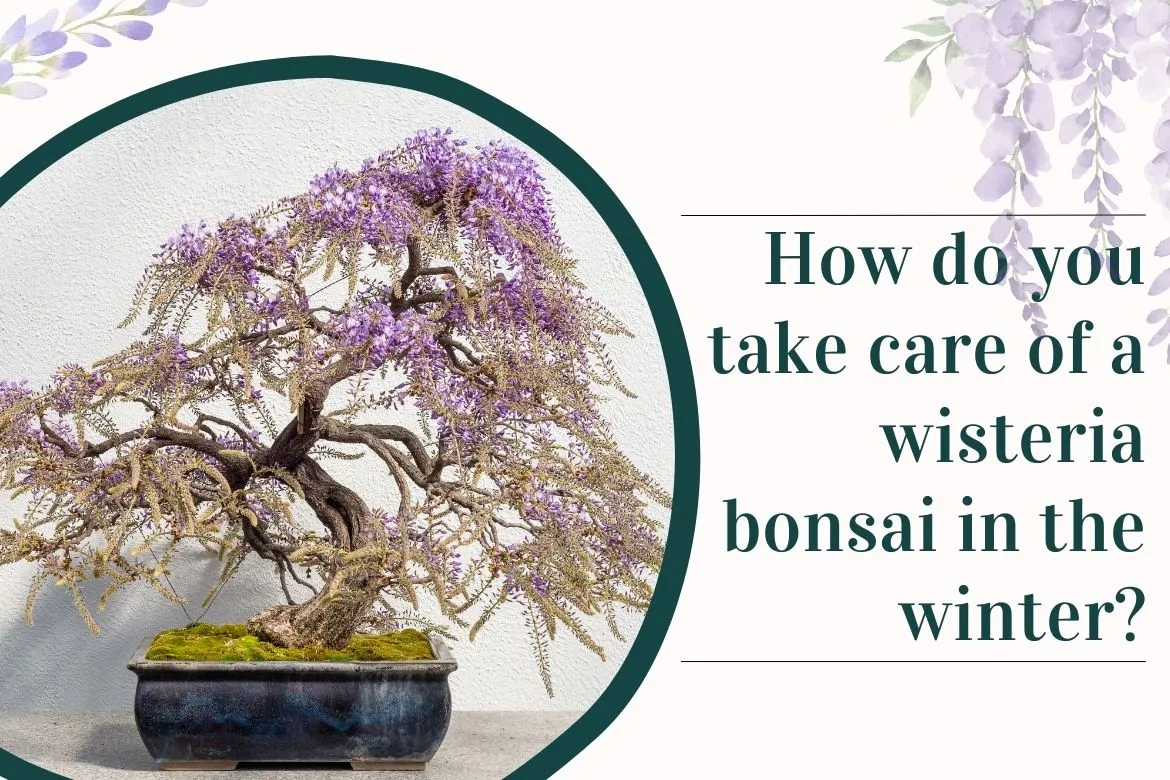Wisteria bonsai trees will require special care during the winter months to ensure their health and longevity. Here are some tips for taking care of your wisteria bonsai in the winter:
- Protect from frost: Wisteria bonsai trees are sensitive to frost and can easily be damaged by extreme cold temperatures. In case the temperature falls below 23°F (-5°C), move your bonsai to a protected area, such as a garage or greenhouse, during the coldest parts of the winter.
- Water sparingly: In the winter, wisteria bonsai trees require less water than they do in the summer. Only water your tree when the soil has completely dried out, and be careful not to over-water it.
- Avoid fertilizing: Fertilizing your wisteria bonsai during the winter can be harmful to its health. Wait until spring to begin fertilizing again.
- Prune sparingly: Winter is not the time to do any major pruning on your wisteria bonsai. However, you can remove any dead or damaged branches or leaves. In late winter you can start with pruning.
- Provide adequate light: Wisteria bonsai trees still require adequate light during the winter months. If your bonsai is indoors, place it near a south-facing window where it will receive plenty of sunlight.
- Mulching: Apply a thick layer of organic mulch around the base of your wisteria to help protect its roots from the cold temperatures. This will also help to conserve moisture in the soil.
- Use burlap wrap: In extreme cases, you can use burlap to wrap around the roots and the trunk to protect the bonsai from harsh winter.
By following these tips, you can help ensure that your wisteria bonsai remains healthy and beautiful throughout the winter season. Read wisteria bonsai tree care for more details on how to take care of the bonsai.
How cold is too cold for wisteria
Wisteria plants are hardy and can tolerate cold temperatures. The temperature at which a wisteria plant will be damaged or killed by cold temperature depends on various factors, including the age and health of the plant, the duration of the cold snap, and whether it is planted in a pot or in the ground.
When planted on the ground, wisteria can withstand a temperature as low as -40°F (-40°C). However, when grown as a bonsai (planted in a pot), wisteria plants can only tolerate temperatures down to around 15-20°F (-9 to -7°C). If the temperature drops below 23°F (-5°C), it is time to move the bonsai to a protected shelter.
Does wisteria lose all its leaves in winter?
Yes, wisteria is a deciduous plant, which means it loses its leaves in the winter. As the days get shorter and temperatures drop, the wisteria plant enters a period of dormancy in which it slows its growth and conserves energy. During this time, the leaves will turn yellow and fall off, leaving the plant bare until spring.
While the wisteria may look dead during the winter months, it is important to remember that it is simply dormant and will come back to life in the spring. As the weather warms up and days get longer, the wisteria will begin to grow new leaves and shoots, eventually producing its beautiful cascading blooms in late spring or early summer.
It is important to note that some wisteria varieties may retain their leaves longer than others, especially in milder climates. However, in areas with colder winters, it is typical for the wisteria to lose all of its leaves during the winter months.
Does wisteria grow in winter?
Wisteria typically does not grow much during the winter months, as it is a deciduous plant that goes dormant in response to the colder temperatures and shorter days. During this time, the plant conserves its energy and focuses on maintaining its roots and stems.
However, in some milder climates, where temperatures do not drop below freezing and the days are relatively long, wisteria may continue to grow slowly throughout the winter months. Additionally, if the wisteria is being grown indoors or in a greenhouse where the temperature and lighting can be controlled, it may continue to grow throughout the winter.

